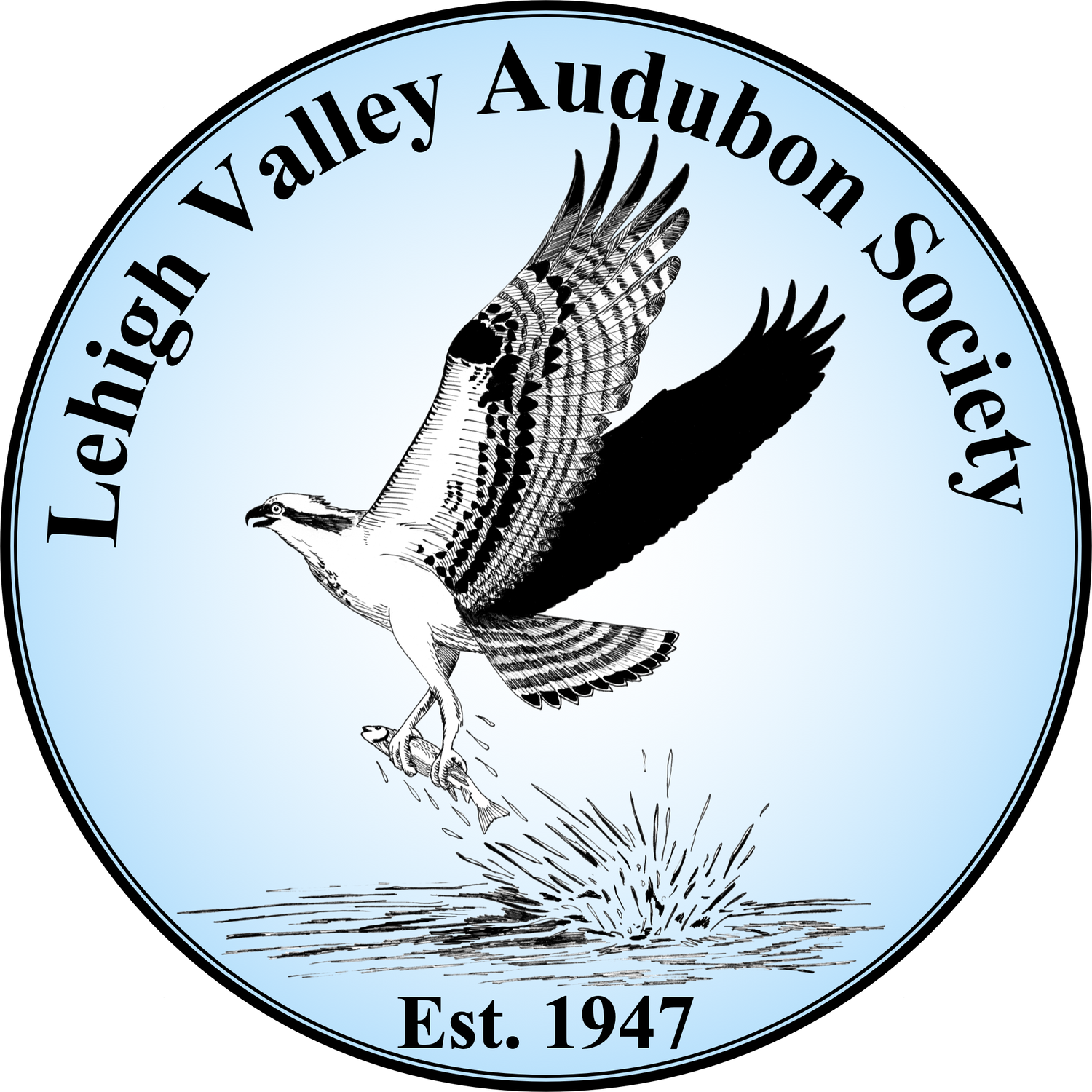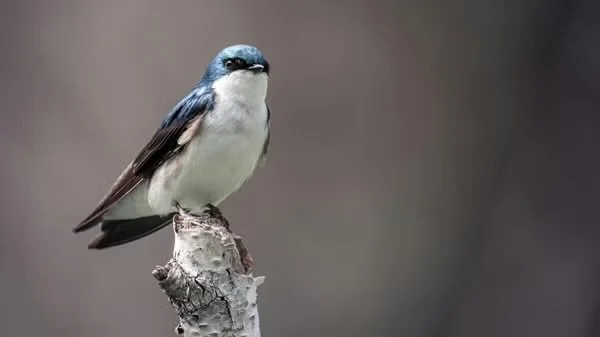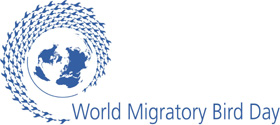The 115th Christmas Bird Count (CBC) is rapidly approaching. Please read the National Audubon article below, giving some background on the Christmas Bird Count and, if you’re not already a regular participant, consider joining this important activity.
Important: A CBC Dinner will be held following the Allentown Bird Count on Dec. 20.
Following are the dates and contacts for the various area counts in the Lehigh Valley. If you are interested in participating, please contact your group leader from last year or the contacts listed below.
Saturday, 12/20 - Allentown CBC, compiler: Stephen Kloiber 610-863-3889
Sunday, 12/21 – Wild Creek/Little Gap CBC, compiler: Josh Nemeth 610-573-8577 or email at allroy1313@rcn.com
Saturday, 12/27 – Bethlehem/Easton/Hellertown CBC: compilers: Don and Elaine Mease 610-346-7754
Christmas Bird Count – From National Audubon Society From December 14 through January 5 tens of thousands of volunteers throughout the Americas take part in an adventure that has become a family tradition among generations. Families and students, birders and scientists, armed with binoculars, bird guides and checklists go out on an annual mission - often before dawn. For over one hundred years, the desire to both make a difference and to experience the beauty of nature has driven dedicated people to leave the comfort of a warm house during the Holiday season. Each of the citizen scientists who annually braves snow, wind, or rain, to take part in the Christmas Bird Count makes an enormous contribution to conservation. Audubon and other organizations use data collected in this longest-running wildlife census to assess the health of bird populations - and to help guide conservation action. From feeder-watchers and field observers to count compilers and regional editors, everyone who takes part in the Christmas Bird Count does it for love of birds and the excitement of friendly competition -- and with the knowledge that their efforts are making a difference for science and bird conservation.
Songbird banding program
Songbird Banding at Jacobsburg Saturday, October 18th 9:00-10:00 a.m.
The fields at Jacobsburg are known for its large of numbers of sparrows in the fall. Join licensed bird bander Dawn Fariello has she captures and bands different species of sparrows and other songbirds. Learn about the banding process and why scientists band birds. To register contact Rick Wiltraut at rwiltraut@pa.gov or 610-746-2801.
Pennsylvania Migration Count
What is the Pennsylvania Migration Count?
The Pennsylvania Migration Count (PAMC) was established to gather annual data on migratory bird populations, and to help answer some fundamental questions regarding their distribution throughout Pennsylvania. PAMC is an annual one-day snapshot of bird populations within our state attempting to answer which species are present, where are they and how many there are? Detecting the changes in population will help give us an early warning of possible declines and it is hoped that steps can be taken toward assisting their future survival.
How does it work?
The Pennsylvania Migration Count takes place each spring on the second Saturday in May, in conjunction with International Migratory Bird Day. PAMC is similar to the Christmas Bird Count (CBC). The difference is that PAMC takes place on a countywide basis, rather than within the confines of a CBC circle. The rules are simple: spend some time in the field counting all birds encountered in a specified area, and keep track of miles traveled and time spent counting. Participants are free to roam their favorite county birding locales at any time during the 24 hour period, starting at 12:01am, counting every bird that they find. Totals are passed along to county compilers, who, in turn, report to the state compiler. The state compiler maintains the PAMC data, and an annual report is published in Pennsylvania Birds, the journal of the Pennsylvania Society for Ornithology (PSO).*When did it start? The Pennsylvania Migration Count originated as part of the continent-wide North American Migration Count (NAMC) in 1992, when there were 141 observers in 10 Pennsylvania counties. The count grew steadily in popularity in PA over the years, and was renamed PAMC in 2003, reflective of the fact that the national count was struggling everywhere but in Pennsylvania. Last year 903 observers from 53 counties participated in the PAMC. They counted 120 birds of 238 different species in over 2932 field hours. This year there are already more counties committed while we are always looking for more people to help. This year has us up to 59 counties committed out of the 67 in the state.
How can you help?
Birders of all skill levels can help out with the count. Beginning at midnight with the songs of the Whip-poor-wills and the hooting of the Great Horned Owls, the PAMC is a great way to spend time outside. Whether you tally birds in your backyard, at your feeders, the local little league ball field, along the river, on a lake, at your camp or spend time hiking through a state park, your observations count. Forms and information for PAMC participation are available from your county compiler, or go online at www.pabirds.org/PAMC/Index.html Data can be submitted via e-mail or post. If participating or for more information, please contact the county compiler first, to avoid duplicate submissions from the same area. If no compiler, contact PSO@PABIRDS.ORG for submission or assistance. You are always welcome to enter your own information on www.ebird.org, a free & public site, for submissions by the general public. This contributes valuable information that is used to track trends of birding population and distribution. This site allows you to keep track of your own sightings where ever you go and see what else is being seen in your area.
Warbler Season
For anyone wondering if it is worth it to join any of our many outings in May, here's a vote for yes. While we have had Yellow-rumped Warblers, Palm Warblers, and Pine Warblers around for a while it gets more and more interesting as gems like these start to show up.
Hummingbirds are back
Feisty and elegant, hummingbirds are amazing creatures.
To live their high energy lifestyles hummingbirds must sync their migration and nesting times with the flowering of nectar-bearing plants, but climate change threatens to throw off this delicate balance.
We need you. With today's technology we can all become citizen scientists, spending a few minutes each week to collect data in our communities that will be invaluable for researchers.
Join Audubon's Hummingbirds at Home to help crowdsource rigorous data that can uncover how hummingbirds are affected by climate change and provide the information necessary to help them.
How does it work? It's easy.
Submit sightings. Record feedings. Explore data.
World Migratory Bird Day 2014
Destination Flyways: Migratory Birds and Tourism
Bonn, 2 April 2014 - Each year on the second weekend in May, dedicated organizations and people around the world plan events to mark World Migratory Bird Day. Since World Migratory Bird Day began in 2006, events have been held in 130 countries and this year we hope to reach even more people and organizations to connect and work together towards conserving migratory birds worldwide.
This year’s World Migratory Bird Day theme is "Destination Flyways: Migratory Birds and Tourism" and will highlight the links between migratory bird conservation, local community development and wildlife watching tourism around the world. [Learn More about this Year’s Theme]
Register Your World Migratory Bird Day Event!
Join the global celebration of a great natural wonder on World Migratory Bird Day! We invite everyone to join us to celebrate, conserve and raise awareness of migratory birds on 10-11 May 2014 by holding bird-watching activities, educational programmes, lectures, art exhibitions, competitions and other public events. However you decide to participate, your contribution will help make a difference! [Learn More & Register Your Event]
Background Information
World Migratory Bird Day was initiated in 2006 and is an annual awareness-raising campaign highlighting the need for the protection of migratory birds and their habitats. World Migratory Bird Day is jointly organized by the Secretariats of the Convention on the Conservation of Migratory Species of Wild Animals (CMS) and the Agreement on the Conservation of African-Eurasian Migratory Waterbirds (AEWA) – two international wildlife treaties administered by the United Nations Environment Programme (UNEP) – and a growing number of partners, including UNWTO for the 2014 campaign. [Visit the WMBD Partners & Sponsors Page]
This year’s campaign is financially supported by the German Federal Ministry for the Environment, Nature Conservation, Building and Nuclear Safety (BMUB), which we acknowledge with great gratitude.
Contact:
Contact us at: contact@worldmigratorybirdday.org
Tel: +49 (0)228 815 2454
Fax: +49 (0)228 815 2450
You can also keep in touch with the growing World Migratory Bird Day Community and get updates on the latest developments and news relating to the campaign on Facebook and Twitter:















